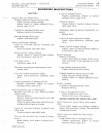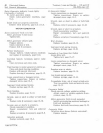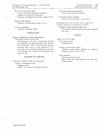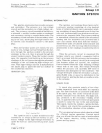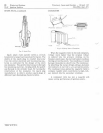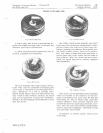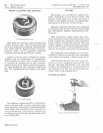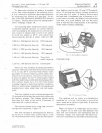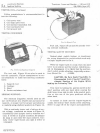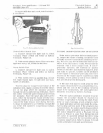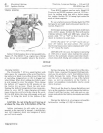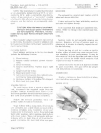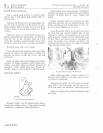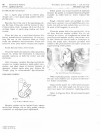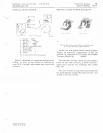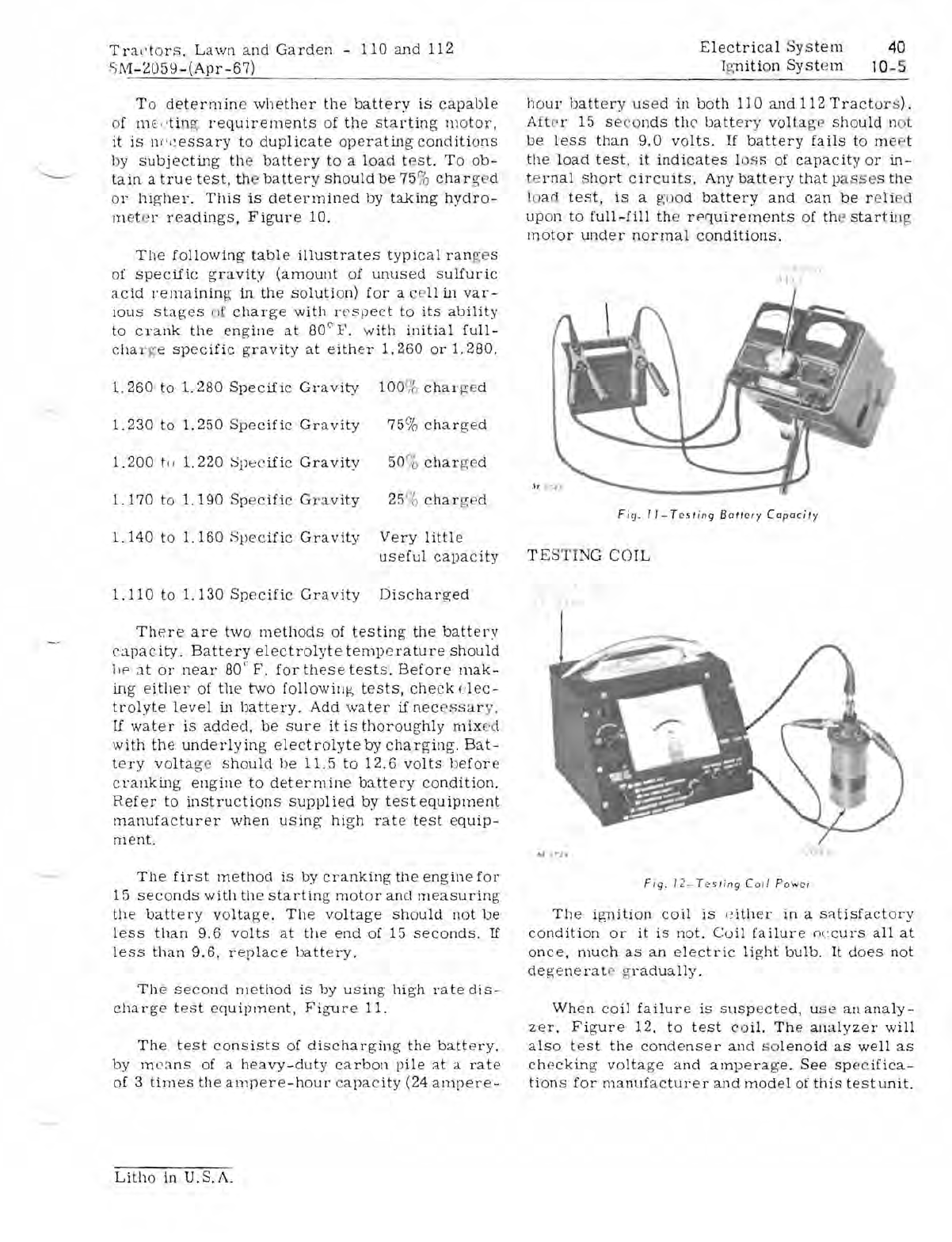
40
Tractors,
Lawn
and
Garden
-
110
and
112
SM-2059-(Apr-67)
To
determine
wheth
er
the
battery
is
capable
of 1l1Edi
10'
requirements
of
the
starting
motor,
it
is
lw,~essary
to
duplicate
operating
conditions
by
subj
ecting
th
e
battery
to
a
load
tt:st.
To
ob-
tain
a
true
test,
th
e
battery
should
be
75%
char
ge
d
or
hig-her.
This
is
determined
by
taking
hydro-
m ete r
readings,
Figure
10.
The
following
table
illustrates
typical
ran
ge
s
of
specific
gravity
(amount
of
unused
sulfuric
a.
cid
remaininf';
in
the
solution)
for
a c
11
in
var-
ious
stages
pf
charge
with
respect
to
its
ability
to
crank
the
engine
at
80"
F.
with
initial
full-
clla
r ge
spec
ific
gravity
at
either
1.
260
or
1.
280.
1.260
to
1.280
Specific
Gravity
100
(;
0
char
ge
d
1.230
to
1.250
Specific
Gravity
75%
charged
1.
200
hi
1.
220
Spec
ific
Gravity
50%
char
ge
d
1.170
to
1. 190 Spec
Hic
Gravity
25%
cha
r
ge
d
1.140
to
1.160
Specific
Gravity
Very
little
useful
capacity
1.110
to
1.130
Specific
Gravity
Discharged
Electrical
Sys
tem
19n
ition
Syst
em
10- 5
hour
battery
used
in
both
11
0
and
112
Tractor
s).
After 15 s e o
nds
the'
batt
ery
volta
g'
should
not
be
less
than
9,0
volts
.
If
battery
fails
to
me t
the
load
test.
it
indicates
loss
of
capacity
or
in-
te
rnal
short
circuits.
Any
battery
that
p
asse
s
the
loar
test,
is
a
g;()od
battery
and
can
be
r e
li
d
upon
to
full-fill
th
e
rpquirements
of
th
e
startin
g
motor
under
normal
conditions.
~,
,
Fig.
11-
Testing
Battery
Capacity
TES
T ING
COIL
There
are
two
method
s of
testing
the
battery
capaCity
.
Battery
electrolyte
temperature
should
llP
:1t
or
near
80
c
F.
for
these
tests.
Before
mak-
ing
either
of
tile
two
followin~
tests,
cheCk
dec-
trolyte
level
in
battery.
Add
water
if
nec
es
sar
y.
If
water
is
added,
be
sure
it
is
thoroughly
mix
·
'ct
with
the
underlying
electrolyte
by
charging.
Bat-
tery
volta
ge
should
be
11.5
to
12.6
volts
before
cranking
engine
to
determine
battery
condition.
Refer
to
instructions
supplied
by
test
equipment
manufacturer
when
using
high
rate
test
equip-
ment.
The
first
method
is
by
cranking
the
engine
for
15
seconds
with
the
starting
motor
ancl
measuring
the
battery
voltage.
The
voltage
should
not
be
less
than
9.6
volts
at
the
end
of 15
seconds.
If
less
than
9.6,
replace
batt
e
ry.
The
second
method
is
by
using
high
rate
dis-
charge
test
equipment,
Figure
11.
The
test
consists
of
discharging
the
battery,
by
means
of a
heavy-duty
carbon
pile
at
a
rate
of
3
times
the
ampere-hour
c
apacity
(24
ampere-
Litho
in U.S.
A.
F ig.
12
- Te
sling
Co
,1
Power
The
ignition
coil
is
I~ither
in a
satisfact
o
ry
condition
or
it
is
not.
Coil
failure
m:
curs
all
at
once,
much
as
an
electric
light
bulb.
It
does
not
degenerat
e g
radually.
When
coil
failure
is
suspected,
Ut;e
an
analy-
zer,
Figure
12,
to
test
coil.
The
analyzer
will
also
test
the
condenser
and
so
lenoid
as
well
as
checking
voltage
and
amperage.
See
sp
ec
ifica-
tions
for
manufacturer
and
model
of
this
test
unit.



